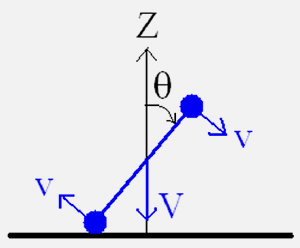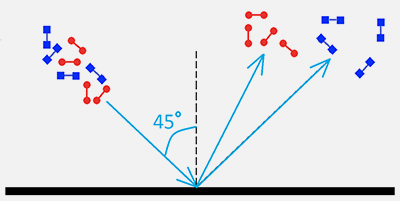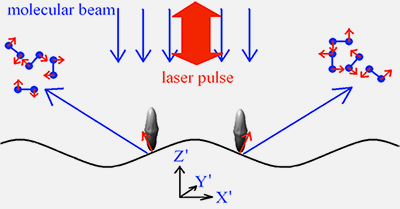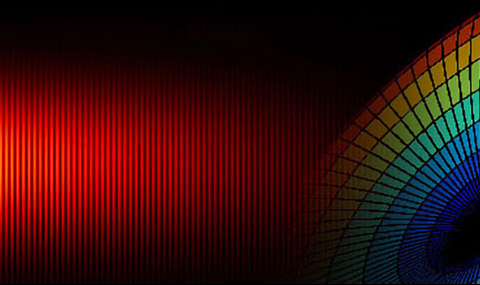The study of collisions of rarefied gas molecules with solid surfaces is an interesting and important problem. The applications range from surface analysis by Helium atom scattering to problems in aeronautics.
An atom (or a small ball) scatters from a flat rigid wall specularly – the angle of incidence is equal to the angle of scattering. The scattering of a diatomic molecule (or a small dumbbell) is more complicated:

The scattering angle of the molecule depends on its initial translational and rotational motion (velocities V and v), as well as on its orientation upon impact (the angle θ) [1].
Using simple theoretical models, we have shown that manipulating the rotation of molecules by short laser pulses, before they collide with the solid surface, modifies the scattering of these molecules from the surface.
One example: exciting a mixture of two molecular isotopes (such as 14N2 and 15N2) with a proper sequence of two laser pulses can bring one of the isotopes to a rotationally HOT state while leaving the other one in a rotationally COLD state. When such a mixture in a molecular beam hits a solid surface, the two isotopes scatter towards different angles [2]:

The blue (red) dumbbells represent rotationally cold (hot) molecules.
Another example: consider molecules that move towards the surface and are excited by a short laser pulse polarized perpendicular to the surface (thick red double-headed arrow). The time-averaged angular distribution of the molecules becomes elongated along the pulse polarization (see gray cigars). If the surface is corrugated, the molecules scattered to the left and to the right will be rotated, upon hitting the surface, in opposite directions! [3]

These and other ideas are waiting for their experimental verification.
- Y. Khodorkovsky, I. Sh. Averbukh and E. Pollak, “Classical theory of rotational rainbow scattering from uncorrugated surfaces”, J. Phys.: Condens. Matter 22, 304004 (2010)
- Y. Khodorkovsky, J. R. Manson, and I. Sh. Averbukh, “Modifying molecule-surface scattering by ultrashort laser pulses”, Phys. Rev. A 84, 053420 (2011)
- Y. Khodorkovsky, J. R. Manson, and I. Sh. Averbukh, “Modifying molecular scattering from rough solid surfaces using ultrashort laser pulses”, Molecular Physics, 111, 1716 (2013)


